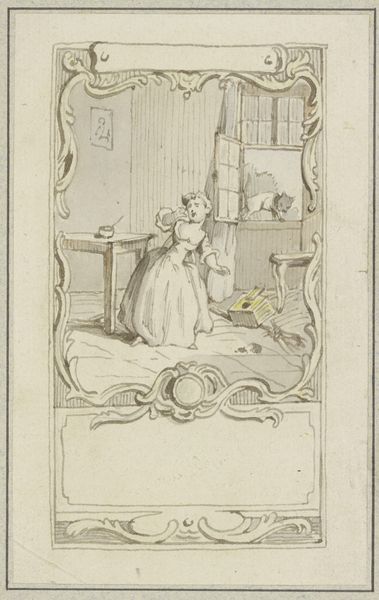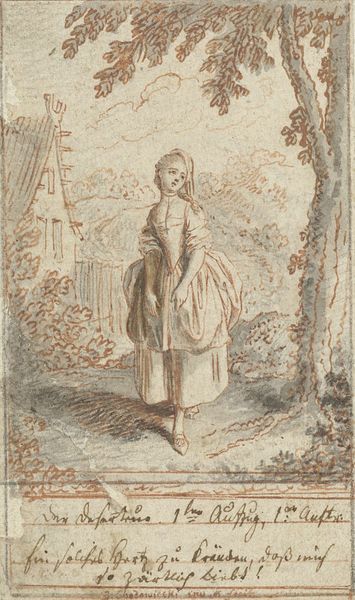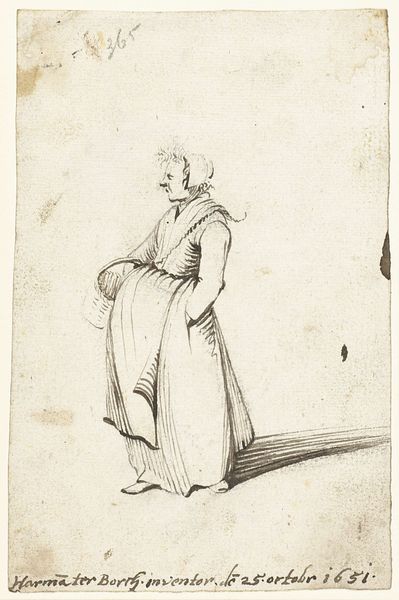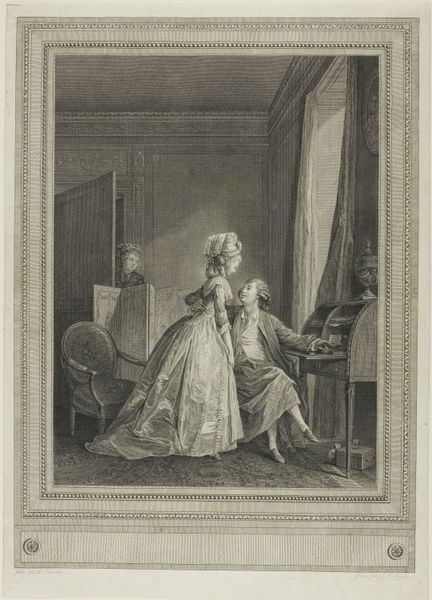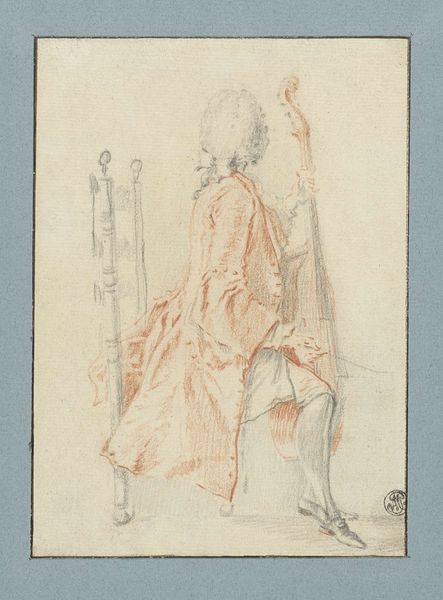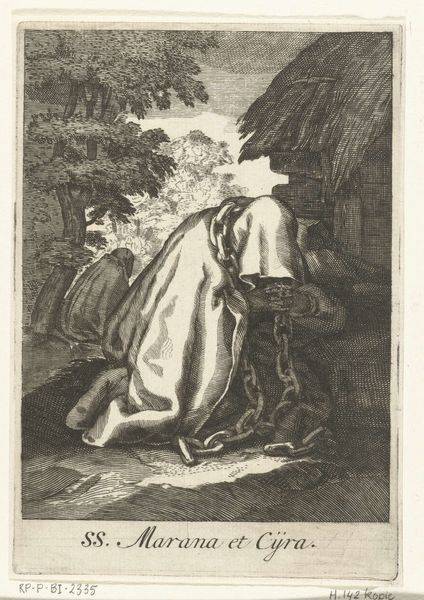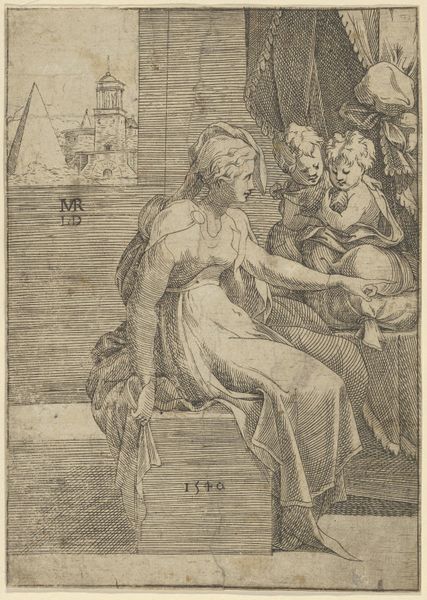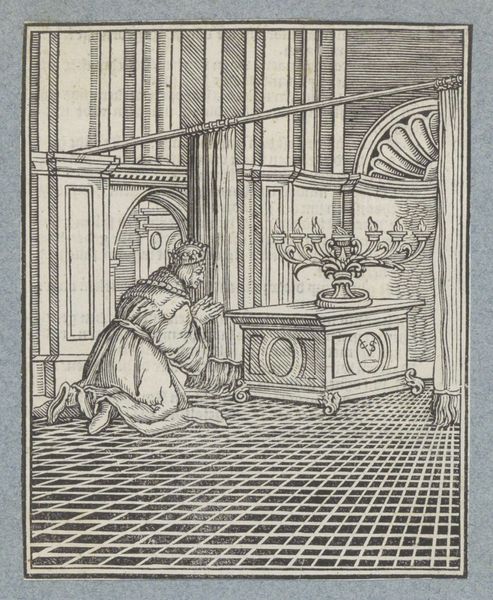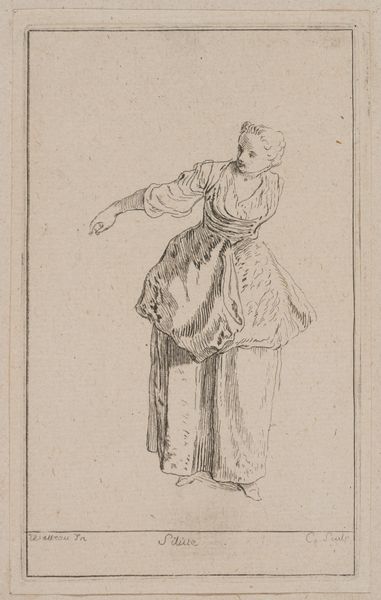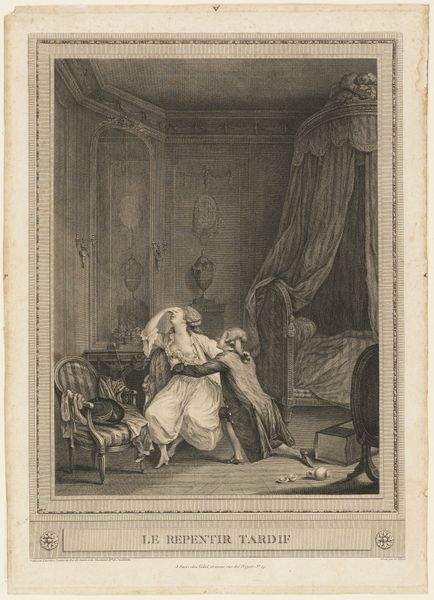
Louise komt bij en bevindt zich alleen in de gevangenis 1770 - 1775
0:00
0:00
danielnikolauschodowiecki
Rijksmuseum
Dimensions: height 90 mm, width 52 mm
Copyright: Rijks Museum: Open Domain
Editor: So, this drawing is called "Louise komt bij en bevindt zich alleen in de gevangenis" by Daniel Nikolaus Chodowiecki, dating from 1770 to 1775. It's in the Rijksmuseum. It seems to be a pen, pencil, and watercolor drawing, almost like a quick sketch for a larger piece. What strikes me is how isolated the figure seems in that vast, empty room. What do you see in this piece? Curator: Well, I immediately look at the materials and the way they’ve been deployed. Chodowiecki’s choice of pen, pencil and watercolor – materials readily available and relatively inexpensive – speaks volumes about artistic production during that period. Was this drawing intended for mass consumption? What social class did he imagine consuming his artwork? It’s interesting how the accessibility of these materials democratizes image making, shifting our understanding of art’s value. Notice the linear quality of the marks - were these preliminary sketches for engravings? Editor: That’s fascinating! I hadn’t thought about it in terms of materials enabling access. The figure seems central. Curator: Absolutely, but the figure isn’t simply *there.* How is the garment depicted? Does the detail of her dress denote status, or is it rendered in such a way to reveal an understanding of textile production itself? Romanticism is about personal experience, but it is important to examine whether it is depicting *shared* labour and collective struggles around wealth and property. What might this drawing say about class structures and gender roles in late 18th century Europe? Editor: It's like the medium and how it was crafted helps to expose those social and labor components. I see a whole different side to the artwork now. Curator: Precisely. Thinking about art through its materials opens doors to broader understandings of history, society, and power relations. Every line, every choice of medium, whispers of the world that produced it. Editor: Thank you, that makes me consider the piece from an entirely different, and really thought-provoking angle!
Comments
No comments
Be the first to comment and join the conversation on the ultimate creative platform.
